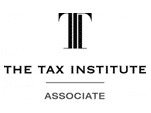Following the High Court’s decision in Bywater Investments Ltd v FCT [2016] HCA 45, the ATO issued Taxation Ruling TR 2018/5 (Ruling) and latterly Practical Compliance Guideline PCG 2018/9 (PCG). This, in short, means the ATO considers an Australian owned and/or controlled foreign trading company may be subject to Australian corporate tax, even if it is incorporated offshore and only has business operations overseas. The PCG replaced the Commissioner’s previous view of the “central management and control” test in the now withdrawn Taxation Ruling TR 2004/15.
Why bring this up now? The ATO intends to enforce this new regime from 1 July 2023 for such companies without any further extensions.
Statutory Residency Test
Ordinarily, a company will be a tax resident of a country if it is incorporated there under its domestic law, subject to any relevant contrary provisions of any DTA Australia may have with that country.
Under the Australian statutory test for corporate residency, a company incorporated overseas is still a tax resident of Australia if:
- it carries on business in Australia; and
- either: (a) its central management and control is in Australia; OR (b) its voting power is controlled by shareholders who are residents of Australia.
What is ‘Central Management and Control’?
According to the Ruling and the PCG, “central management and control” is the control and direction of a company’s operations.
The key element is the making of high-level decisions that set the company’s policies, determine the direction of its operations, and set the type of transactions it will enter. The nature of a company’s activities and business define which acts and decisions are an exercise of the central management and control of that company.
Clearly, a fact centric issue that requires investigation and clarification on a case-by-case basis for each company concerned.
Bywater: Central Management and Control = Carrying on Business
Bywater considered whether a company incorporated outside of Australia with no tangible business operations here was nevertheless an Australian tax resident.
The High Court found that it was not necessary for any part of the actual trading or business operations of the relevant company to occur in Australia for the company to be considered to be a tax resident of Australia under the ITAA 1936. That was because the central management and control of a business is factually an integral part of carrying on that business.
It was the High Court’s view that a company “carries on business” both where its trading and investment activities take place, and where the “central management and control” of those activities actually occurs in reality. Thus, the place where the formal “rubber stamping” of a third party’s decisions by nominee directors is not determinative.
Accordingly, where in fact such third-party decisions are usually made – whether or not they have the technical legal power or authority to do so – becomes the core enquiry. An increasingly complex but determinative concept in a world embracing remote working arrangements.
Virtual Board Meetings
COVID was definitely a trying time for the world over, however, it did, thankfully, have some positives – flexible and home working arrangements for one. In a modern world where professionals and executives often find themselves chiming into meetings via Zoom, Teams, or the like, it has certainly made our lives easier in many respects. After all, less time commuting to and from work and meetings (especially when they’re cross-border or overseas) means more time is available for working productively and also for family and other personal pursuits.
However, as controllers of companies embrace virtual meetings with open arms, it becomes harder and harder to clearly determine where the core high level corporate decisions relevant to the location of central management and control of a company is exercised, both factually and in substance.
In the case of a foreign-incorporated company with a majority of Australian resident directors, it becomes increasingly likely that in following the PCG the ATO will determine that the “central management and control” of the company is exercised here – especially if the majority of its important board meetings and hence decisions are made in Australia.
Following Bywater, the first two limbs of the statutory definition of corporate residence have now been conflated together such that, if you have central management and control in Australia, then it is considered that the company also conducts business in Australia.
Even in circumstances where a company does not trade or physically have any tangible business presence or sales in Australia and has a majority of foreign resident shareholders, if it has its central management and control is in Australia, then under the ATO’s interpretation it is a tax resident of Australia – regardless of its foreign incorporation or that all its trading, day-to-day business operations, and investment activities all occur overseas.
Naturally, the question then arises – if a company is seemingly resident of both Australia and the foreign country (in which it is incorporated) under their respective laws, how can the risk of double taxation be mitigated? That can often be addressed by reviewing the relevant DTA.
Applying the DTA
Once the ATO implements its new regime on 1 July 2023, there is a significant risk an Australian controlled foreign-incorporated company with only offshore trading/business will have its profits potentially subjected to double taxation, being taxed in both Australia and the foreign country – save for the “tie-breaker” provisions (if available) of any relevant ratified DTA. Most modern, (but not all) DTAs have such provisions. Australia and New Zealand have gone further, as a “one-off pact”, and adopted an administrative joint approach to this vexed issue by allowing relevant companies to self-assess the above indicia (under art 4(1) of the Multilateral Instrument applicable to the Australian-New Zealand DTA, as ratified by both countries).
However, even with a DTA – and as notes above some DTA’s do not have a tie-breaker provision – there may not be a clear single solution to taxing in one of the countries without reliance on the foreign tax credit system. As such, some companies may find themselves in a situation where they are up for double corporate tax until they are able to get a tax credit for tax paid from either the ATO or the foreign revenue office.
Ultimately, the way in which – and, importantly, where – such offshore businesses are centrally managed and controlled under PCG needs to be reviewed, in light of these changes. If not, then it’s corporate owner might be liable for double tax until the onerous process of obtaining a tax credit from either the ATO or the foreign revenue office of the relevant foreign country is resolved. An often protracted, arduous and expensive process.
Example
Robert and his daughter, Emily, (both being Australian citizens) conduct an equipment hire business through a New Zealand incorporated company (“NZCo”) with a New Zealander shareholder and local Chief Operating Officer, Mary, holding 50% of its ordinary shares. Robert and his daughter each hold 25% of the ordinary shares.
NZCo operates the business solely in NZ and does not have any material cross-border transactions or services rendered from Australia which would enliven any BEPS (base erosion profit shifting) or transfer pricing issues.
Robert, Emily, and Mary comprise the directors of NZCo. All key decisions of NZCo need to be made by at least 2 directors at any one time (ie Mary, Robert, or Emily cannot make key management decisions for NZCo on their own, based on the constitution and shareholders agreement for NZCo).
As a matter of convenience, to save time and money constantly flying to and from NZ, the key decisions concerning strategic operations, directions, policies and transactions/major contracts for NZCo are most often made by Robert and Emily whilst in Australia on a Zoom video-call with Mary (who is usually in NZ for same). Once a board decision is made, they then implement the policy or implement their decisions and directions concerning the overall physical operations of the business to the relevant senior managers located in NZ to be carried out under Mary’s direct line management in NZ. Board decisions tend to be unanimous, however, differences on major strategic issues, policies, and directions of the business occur, with Mary reluctantly accepting their call as holders of Board power but diligently implementing its decisions.
Under the ATO’s new regime, there is a significant risk that the profits of NZCo will be taxed in both Australia (at the Australian company tax rate of 25% on its trading profits if its aggregated annual turnover is less than $50m p/a and less than 80% of its assessable income is ‘base rate entity passive income’) and NZ (at the NZ company tax rate of 28%).
As a result, the tiebreaker provisions contained in Arts 4 and 7 of the NZ-Australia DTA (as modified by the MLI) and the Australia and NZ joint administrative approach to those provisions need to be considered and applied to determine tax residency before considering applying for a tax credit in either country. In the case of NZCo, if NZCo meets the strict criteria to apply the administrative approach, then NZCo may be able to reasonably self-determine its “place of effective management” (ie the place where ‘central management and control’ is exercised) as being in Australia under the DTA, and (by extension) self-determine its corporate tax residency as being solely in Australia. Whilst the “place of effective management” (PoEM) is not defined in the DTA or the MLI, the concept of PoEM is globally understood to generally mean a place where key management and commercial decisions necessary for the conduct of business of an entity as a whole are made in substance.[1] In light of this, the ATO (and the NZ IRD) is understandably of the view that the PoEM has a similar meaning to the “central management and control” test discussed above.
Hence, if NZCo under the administrative approach properly self-determines it is a tax resident of Australia, its NZ corporate profits would be taxed in Australia at 25% and not in NZ at 28% – despite it only having a permanent establishment or traditional fixed place of business in NZ.
Key Takeaways
The way in which such companies previously thought to be “foreign resident companies” do business needs to be reviewed in light of the fast-approaching change to corporate tax residency by the ATO (ie as and from 1 July 2023). If not, then it might be up for double tax until it traverses the administrative obstacles in seeking consensus from the ATO and the relevant foreign tax office to determine its tax residency or procure a corporate tax credit from one of the two relevant revenue offices. Unfortunately, Australia currently only adopts the above joint administrative approach discussed above with NZ.
A deep factual analysis of where and how the high-level functions, policies, decisions, and operations of the “foreign company” as compared to its more day-to-day operations will need to be undertaken as part of arriving at least a reasonable arguable position of its proper tax residency (hopefully sooner than later). Importantly, if the upshot of that investigation is negative, a detailed analysis of what changes commercially and practically (importantly without contrivance or artificiality) can be made to its corporate governance to ensure the intended tax residency of the subject company can be retained will need be carefully considered and, if appropriate, acted upon promptly.
Future Changes on the Horizon?
The former government announced some changes to the corporate residency test in the 2020-21 Federal Budget which, (if enacted) would mean that the treatment of foreign incorporated companies will reflect the position prior to the Bywater decision. If enacted, the Ruling and the PCG are likely to be revisited.
However, legislation has not yet been introduced to implement the proposed changes some two years since the announcement. As time moves on, it becomes less and less likely to be implemented (particularly since it’s a proposal of the former Government), leaving Australian controlled foreign companies to contend with the rapidly approaching new regime outlined above.
This article was first published in the Thomson Reuters Weekly Tax Bulletin (Issue 27, published on 30 June 2023).
Want Tax & Structuring Law updates delivered straight to your inbox? Click here to subscribe.
[1] Du Plessis, I, ‘Place of Effective Management’: Finding Guidelines in Case Law, Intertax, Volume 48, Issue 2 (2020) pp. 195-217.










